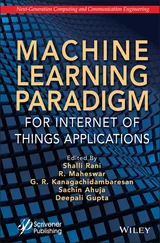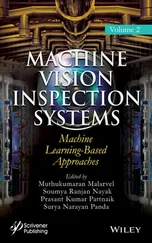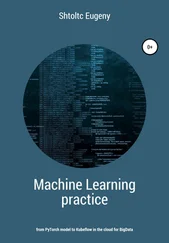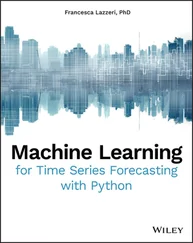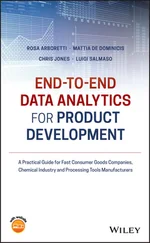© 2021 Scrivener Publishing LLC
For more information about Scrivener publications please visit www.scrivenerpublishing.com.
All rights reserved. No part of this publication may be reproduced, stored in a retrieval system, or transmitted, in any form or by any means, electronic, mechanical, photocopying, recording, or otherwise, except as permitted by law. Advice on how to obtain permission to reuse material from this title is available at http://www.wiley.com/go/permissions.
Wiley Global Headquarters
111 River Street, Hoboken, NJ 07030, USA
For details of our global editorial offices, customer services, and more information about Wiley products visit us at www.wiley.com.
Limit of Liability/Disclaimer of Warranty
While the publisher and authors have used their best efforts in preparing this work, they make no representations or warranties with respect to the accuracy or completeness of the contents of this work and specifically disclaim all warranties, including without limitation any implied warranties of merchantability or fitness for a particular purpose. No warranty may be created or extended by sales representatives, written sales materials, or promotional statements for this work. The fact that an organization, website, or product is referred to in this work as a citation and/or potential source of further information does not mean that the publisher and authors endorse the information or services the organization, website, or product may provide or recommendations it may make. This work is sold with the understanding that the publisher is not engaged in rendering professional services. The advice and strategies contained herein may not be suitable for your situation. You should consult with a specialist where appropriate. Neither the publisher nor authors shall be liable for any loss of profit or any other commercial damages, including but not limited to special, incidental, consequential, or other damages. Further, readers should be aware that websites listed in this work may have changed or disappeared between when this work was written and when it is read.
Library of Congress Cataloging-in-Publication Data
ISBN 978-1-119-78580-4
Cover image: Pixabay.Com
Cover design by Russell Richardson
Set in size of 11pt and Minion Pro by Manila Typesetting Company, Makati, Philippines
Printed in the USA
10 9 8 7 6 5 4 3 2 1
Sustainable computing paradigms like cloud and fog are capable of handling issues related to performance, storage and processing, maintenance, security, efficiency, integration, cost, energy and latency in an expeditious manner. According to statistics, billions of connected IoT devices will be producing enormous amounts of real-time data in the coming days. In order to expedite decision-making involved in the complex computation and processing of collected data, these devices are connected to the cloud or fog environment. Since machine learning as a service provides the best support in business intelligence, organizations have been making significant investments in the creation of the first artificial intelligence services. The abundant research occurring all around the world has resulted in a wide range of advancements being reported on computing platforms. This book elucidates some of the best practices and their respective outcomes in cloud and fog computing environments. The practices, technologies and innovations of business intelligence employed to make expeditious decisions are encouraged as a part of this area of research.
This book focuses on various research issues related to big data storage and analysis, large-scale data processing, knowledge discovery and knowledge management, computational intelligence, data security and privacy, data representation and visualization and data analytics. The featured technology presented herein optimizes various industry processes using business intelligence in engineering and technology. Light is also shed on cloud-based embedded software development practices to integrate complex machines so as to increase productivity and reduce operational cost. The various practices of data science and analytics which are used in all sectors to understand big data and analyze massive data patterns are also essential sections of this book.
Chapter 1focuses on the use of large amounts of information that enable a computer to carry out a non-definitive analysis based on project understanding. Chapter 2explains an approach to establish an interactive network of cognitively intervening domains of cyber security services to the computational specifications of the Internet of Things (IoT). Various approaches for predictive data analytics are briefly introduced in Chapter 3; and Chapter 4covers details of cloud evolution, adaptability and key emerging trends of cloud computing. Chapter 5discusses the security challenges as well as methods used for tackling those challenges along with their respective advantages and disadvantages for protecting data when using cloud storage. Chapter 6methodically audits the security needs, the assault vectors and the current security responses for IoT systems and also addresses insights into current machine learning solutions for solving various security issues in IoT systems and a few future cryptographic cloud analysis headlines. In Chapter 7, the RSA algorithm is implemented as homomorphic encryption and the authors attempt to reduce its time complexity by implementing the homomorphism RSA. Chapter 8discusses the challenges of using smart city technology and IoT networks via CR and EH technologies. In Chapter 9, a study of the four well-known heuristic task scheduling algorithms of HEFT, CPOP, ALAP and PETS is presented along with their comparative study based on performance metrics such as schedule length, speedup, efficiency, resource utilization and cost. Chapter 10overviews the potential applications of cloud computing in smart working systems and case studies; and a study is presented in Chapter 11on the dual sink approach using clustering in body area network (DSCB). Chapter 12reviews the comprehensive literature on green cloud computing and exposes the research gaps in this field that have a lot of research potential for future exploration. In Chapter 13, a system is proposed which identifies the disease, classifies it, and responds according to the type of disease identified and also describes the preventive measures using deep learning. Chapter 14aims to predict the five sectors—the pharmaceutical, banking, fast-moving consumer goods, power and automobile sectors— using linear regression, recurrent neural network (RNN) and long short-term memory (LSTM) units. Chapter 15analyzes the Aadhaar dataset and draws meaningful insights from the same that will surely ensure a fruitful result and facilitate smoother conduct of the upcoming NPR. Chapter 16first outlines the current block chain techniques and consortium block chain framework, and after that considers the application of blockchain with cellular 5G network, Big Data, IoT, and mobile edge computing. Chapter 17shows how various advanced machine learning methods are used for different application in real life scenario. Chapter 18explores the anthropomorphic gamifying elements, mostly on how it can be implemented in a blockchain-enabled transitional healthcare system in a more lucrative manner.
Sachi Nandan Mohanty, India
Jyotir Moy Chatterjee, Nepal
Monika Mangla, India
SuneetaSatpathy, India
Sirisha Potluri, India
May 2021
The editors would like to pass on our good wishes and express our appreciation to all the authors who contributed chapters to this book. We would also like to thank the subject matter experts who found time to review the chapters and deliver their comments in a timely manner. Special thanks also go to those who took the time to give advice and make suggestions that helped refine our thoughts and approaches accordingly to produce richer contributions. We are particularly grateful to Scrivener Publishing for their amazing crew who supported us with their encouragement, engagement, support, cooperation and contributions in publishing this book.
Читать дальше



